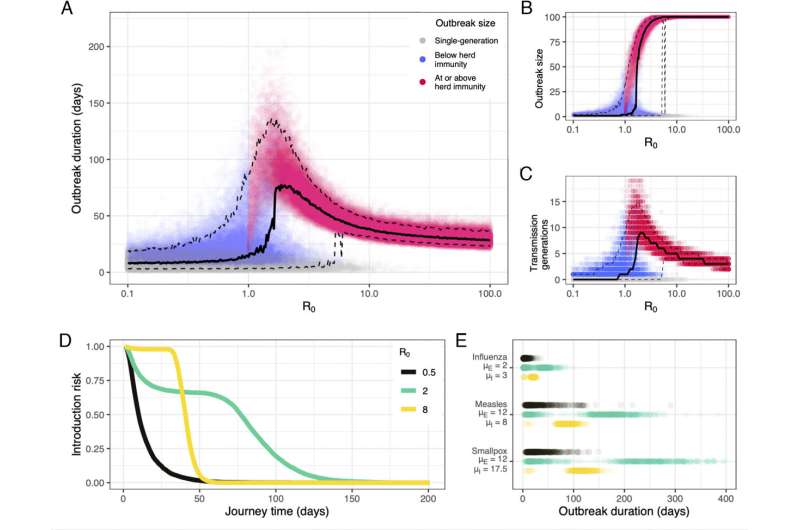July 23, 2024 report
This article has been reviewed according to Science X's editorial process and policies. Editors have highlighted the following attributes while ensuring the content's credibility:
fact-checked
peer-reviewed publication
trusted source
proofread
Mathematical models used to calculate speed of disease spread in early ocean travel

Two scientists at the University of California, Los Angeles, have developed a way to calculate the approximate speed of disease spread between distant places via ocean travel hundreds of years ago.
In their study, published in the Proceedings of the National Academy of Sciences, Elizabeth Blackmore and James Lloyd-Smith compiled factors that can impact disease spread and applied them mathematically to crews and passengers aboard ocean-crossing vessels to learn more about the spread of disease in the early days of ocean travel.
Prior research has shown that infectious diseases can spread at vastly different rates determined by such factors as infectious duration or how easy it is for a virus to jump from one host to another. Disease spread is also greatly impacted by the density and size of a given population and how many have some immunity to the disease.
Much has been written about the impact of infectious diseases carried across the sea by passengers and crews aboard ships. The introduction of smallpox to the New World, for example, has been described as devastating to native population numbers. The researchers note that little research has sought to corroborate such claims.
In their work, they used the characteristics of diseases combined with mathematics to learn more about the true spread of disease across the seas over the past several hundred years.
For a single ship to serve as a vector for disease spread, the researchers note, several factors are at work, starting with the disease itself. Influenza, for example, would have spread easily among a sailing crew hundreds of years ago if, when they embarked, a single crewman was infected. But because it would have taken over a month to cross the ocean in an early sailing ship, the entire crew would have been infected and recovered by the time they reached the Americas.
Other diseases would be expected to have different outcomes, of course. Measles, for example, carries a 24% chance of persistent contagion upon reaching the destination. The researchers suggest that because of such factors, infectious disease spread across the seas in the early days of ocean travel was likely slow and rare.
The researchers also note that things changed dramatically with the introduction of steam ships, which allowed for much shorter crossing times and more passengers. That would have increased the odds of carrying diseases quite dramatically—one sick passenger, they note, could have virtually guaranteed transmission of the disease upon arrival at a distant destination.
More information: Elizabeth N. Blackmore et al, Transoceanic pathogen transfer in the age of sail and steam, Proceedings of the National Academy of Sciences (2024). DOI: 10.1073/pnas.2400425121
Journal information: Proceedings of the National Academy of Sciences
© 2024 Science X Network




















